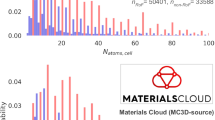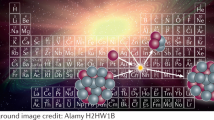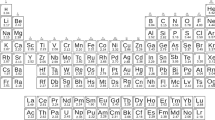Abstract
IT is well known from X-ray studies that in many of the highly hydrated salts of the iron and the rare earth groups the cation is surrounded by an octahedron of water molecules. This distribution fits well with the observed magnetic properties of these salts; first, it gives an electric field of predominantly cubic symmetry about the central cation, as required by the magnetic data, and secondly, it gives the potential of the electric field the proper sign demanded by the magnetic data. The magnetic data, however, further require (1) that the field, though predominantly cubic in symmetry, should deviate from it considerably, since the cation in these crystals exhibits, in general, a strong magnetic anisotropy, and (2) that for a given cation the magnitude and the asymmetry of the electric field about it should be nearly the same in the different hydrated salts containing the ion, since the magnetic anisotropy of the ion is found to be of the same order of magnitude in all these salts. These requirements will be satisfied in a simple manner if the octahedron, instead of being regular, deviates from it slightly—a small deviation is permitted by the available X-ray data—and the deviation is determined by the nature of the cation in the centre. This arrangement appears very probable in view of the important theoretical result obtained recently by Jahn and Teller1, namely, that if the electronic state of the central ion is degenerate, the system will be stable only if there is enough asymmetry in the system to remove the degeneracy (except, of course, the special two-fold degeneracy of Kramers). This minimum asymmetry required for stability supplies then the mechanism by which the cation can in a manner determine the geometry of distribution of the water molecules around it.
This is a preview of subscription content, access via your institution
Access options
Subscribe to this journal
Receive 51 print issues and online access
$199.00 per year
only $3.90 per issue
Buy this article
- Purchase on Springer Link
- Instant access to full article PDF
Prices may be subject to local taxes which are calculated during checkout
Similar content being viewed by others
References
Proc. Roy. Soc., A, 161, 220 (1937); 164, 117 (1938).
J. Chem. Phys., 6, 297 and 654 (1938).
Raman, C. V., and Chinchalkar, S. W., NATURE, 123, 758 (1931); Haenny, C., C.R., 193, 931 (1931); 195, 219 (1932).
Phil. Mag., 20, 856 (1935).
Author information
Authors and Affiliations
Rights and permissions
About this article
Cite this article
KRISHNAN, K. Jahn-Teller Theorem and the Arrangement of Water Molecules around Paramagnetic Ions in Aqueous Solutions. Nature 143, 600–601 (1939). https://doi.org/10.1038/143600a0
Issue Date:
DOI: https://doi.org/10.1038/143600a0
Comments
By submitting a comment you agree to abide by our Terms and Community Guidelines. If you find something abusive or that does not comply with our terms or guidelines please flag it as inappropriate.



